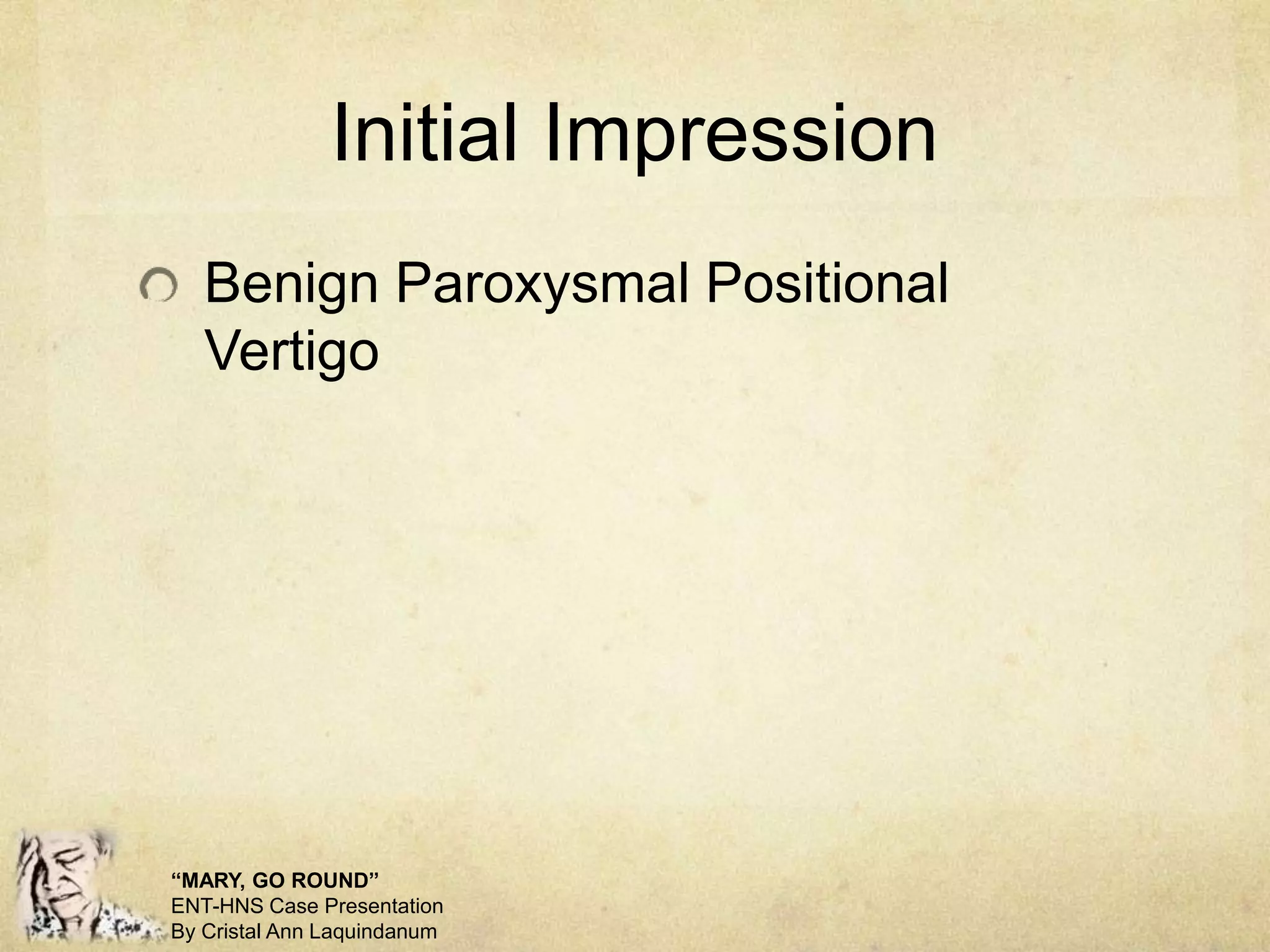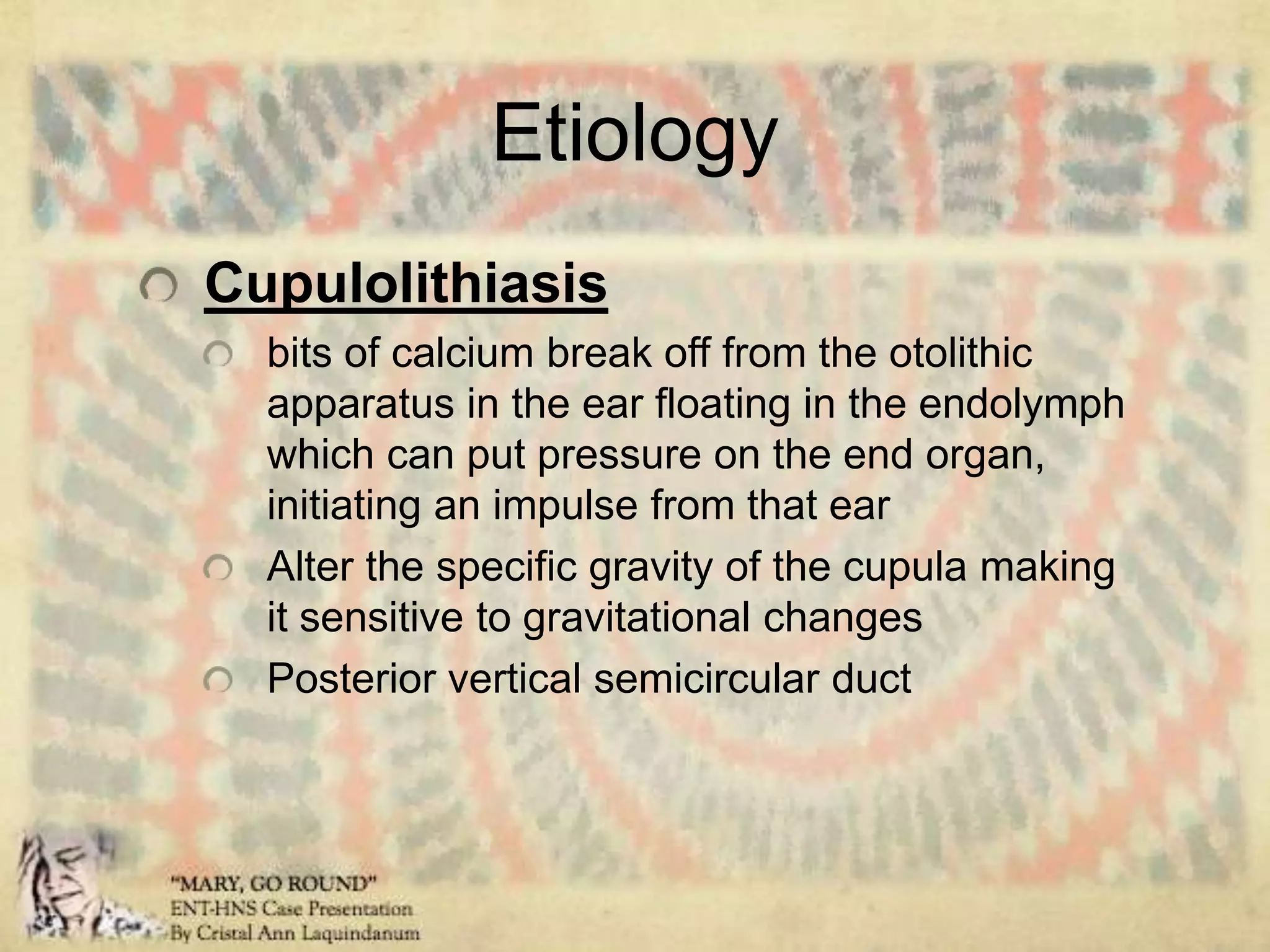This document presents the case of a 46-year-old woman who experiences episodes of dizziness and vertigo. After examining the patient, the presenting doctor determines that she likely has benign paroxysmal positional vertigo (BPPV). BPPV is caused by debris in the inner ear that causes symptoms when the head is moved. The doctor confirms the diagnosis with tests like the Dix-Hallpike maneuver. Treatment options include exercises like the Epley maneuver to reposition the debris, as well as medications.





















































